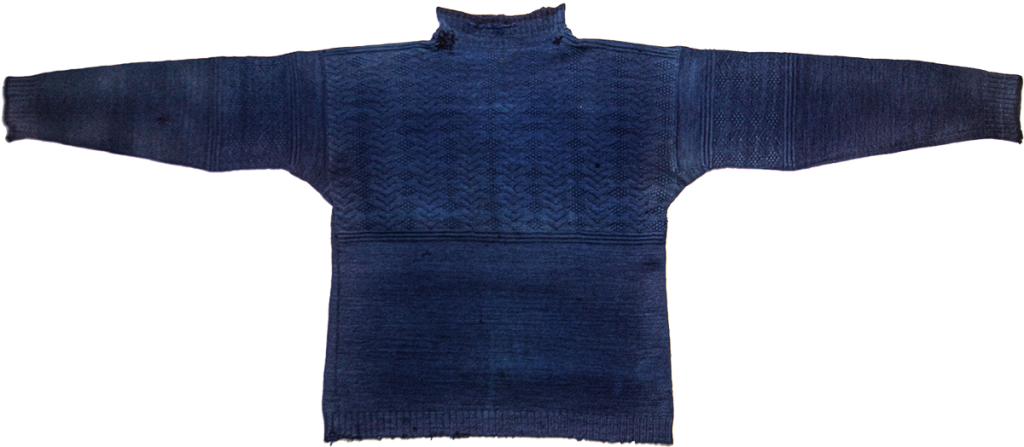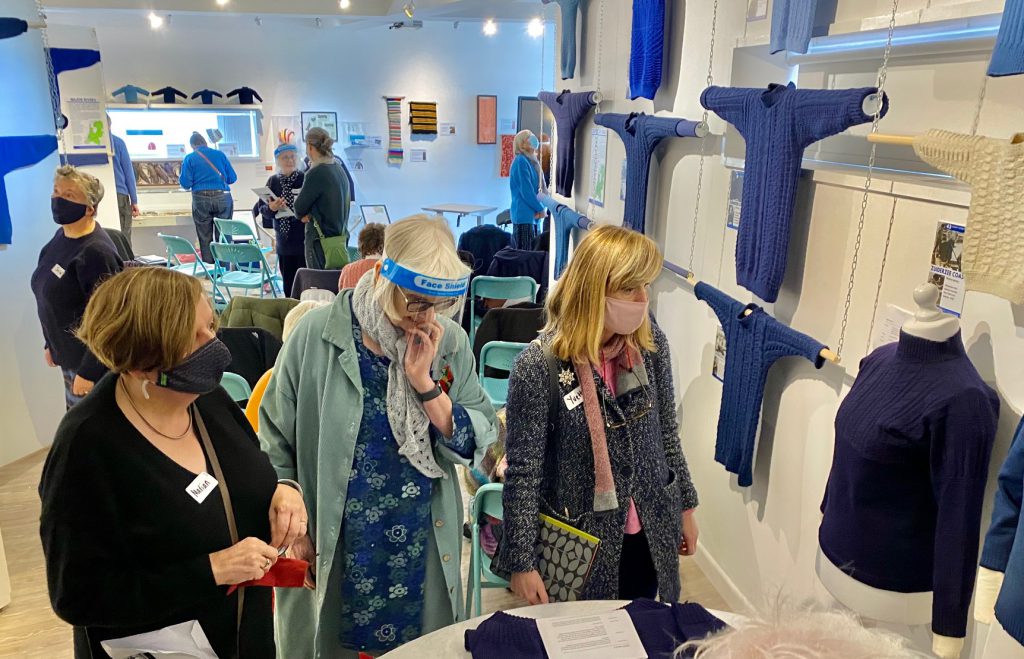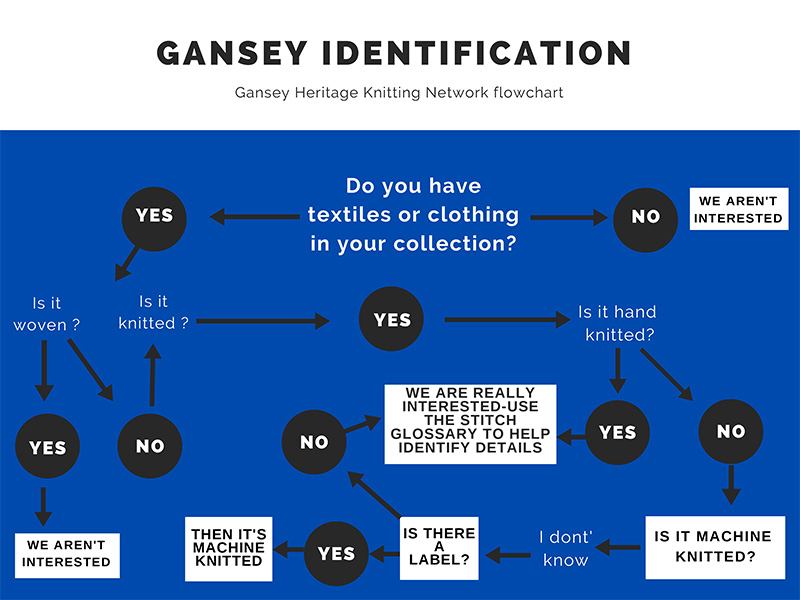Textiles at the Museum
Sheringham Museum has long held an important collection of historic fishermen’s ganseys – sweaters – many of them hand-knitted in the town as well as local embroidery and other textiles.
The Michael Harvey Collection
The recent bequest to the museum of significant artefacts from the collection of the late Michael Harvey, who was very well known for his research and documentation of craft textile work, has established the museum’s collection. We now have more than forty historic ganseys as well as related objects, accessories, books and other research material as part of our collection within the museum, making it one of national significance.
In this video, Lesley Lougher introduces Michael Harvey and this spectacular collection. Various garments and accessories from his collection were on display as part of our 2021 Summer Exhibition.
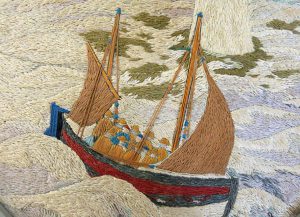 The Craske Collection
The Craske Collection
We also hold an excellent collection of embroidery work by John Craske (1881 – 1943). Born into a Sheringham fishing family, Craske was dogged by ill health throughout his life.
He occupied himself when he was incapacitated by painting; in later years when often bed-bound and unable to paint, he embroidered scenes of coastal life and events from his memory.
His naive but perceptive style impressed collectors and he achieved international fame in his lifetime.
Ganseys and Knitting Accessories
The Museum holds an extensive textile collection, including a number of very fine old ganseys.We have a team of textile enthusiasts researching their origins, their patterns and the knitting techniques that were used to make them.
The group meets monthly (3rd Tuesday of the month). We knit or sew in support of the museum exhibitions and displays.
One of our researchers is Martin Warren, who became very interested in ganseys during his time as manager of Cromer Museum, which also holds a number of ganseys in its collection. Martin has documented his research results and you can see his work by clicking here.
You can read more about knitting accessories below here.
The East Anglia Gansey Group
Sheringham Museum volunteers have founded the East Anglia Gansey Group to provide a forum for those keen on all aspects of ganseys and their part in maritime history. They have a webpage here where you can find out more information and a Facebook page for the latest news, which is here.
Gansey Symposium
Our Summer 2022 Exhibition (Dutch Children’s Ganseys) closed on October 30, and we celebrated its success, as we usually do at the end of season, with a Symposium (Saturday, Nov 6) – a mixture of talks, videos, demonstrations, workshops and general socialising relating to the exhibition.
Ganseys – identifying the patterns
A brief history
Ganseys were worn almost universally by the fishermen of the British Isles and the North Sea coasts. Generally they can be traced to the early 19th century with possible earlier origins. Some fishermen chose to wear commercially purchased hand or machine knitted jumpers, but, it is the beautiful hand-knitted designs that are most associated with a sense of place and often knitted with love by a family member.
You can help us
Do you think you might have a Gansey in your collection or at home, or just an interest in Ganseys and want to find out how to identify them?
See our Gansey Glossary which you can download below.
Sheringham is renowned for many extremely fine gansey patterns (in both senses of the word ‘fine’).
Gansey Glossary
We developed a Gansey Glossary to help identify ganseys, it is too big to display here. You can open it to view and download a copy to view in a PDF viewer or to print out by clicking below (PDF 40mb).
Do you think you have a gansey?
If you think you have a gansey it may be of significant heritage importance, you can help us here by assessing whether it is, and then by filling in a form and adding it to our database.
You can view the Diagnostic Flowchart for gansey identification and access the Recording Template HERE
Click on the image below to enlarge.
Gansey Recording Template
You can download the Gansey Recording Template here.
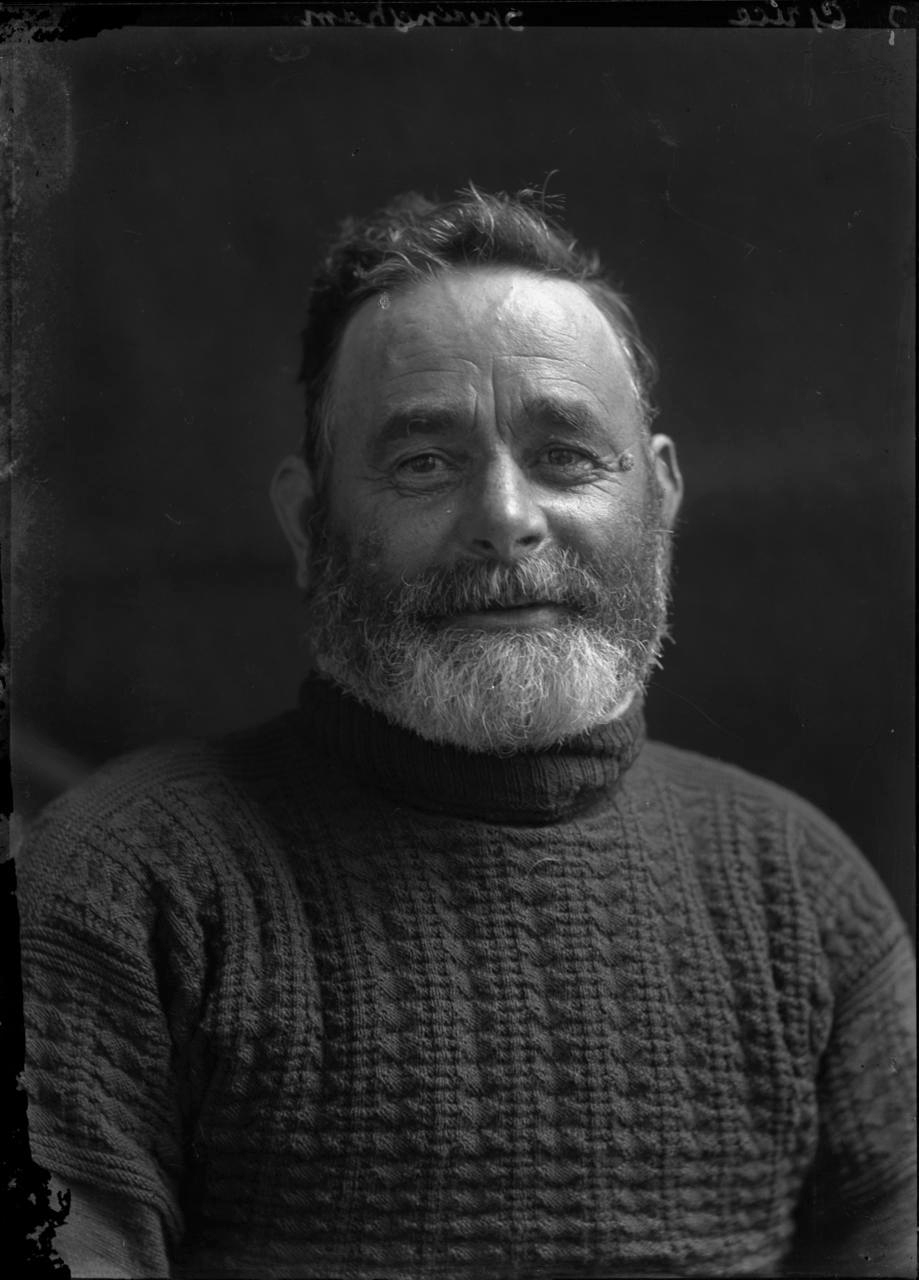
Pattern GP3, Mr Grice’s meshes and ladders gansey. Sheringham 1920 to 1929. Cromer Museum collection.
Knitting Accessories
We also have a variety of textile accessories in our collection and on display, including knitting sheaths that were used for making ganseys.
Knitting Sheaths
How were they used?
The sheath was worn at an angle, tucked into the knitter’s belt, called a ‘cow-band’ or an apron waistband or string. The hole at one end would be made according to the diameter of the needle used, thereby the smaller the hole, the finer the gauge of knitting.
Sometimes the ball of yarn was held inside a purse attached to the knitter’s belt by a hook, or stuck onto a nail hammered into the back of the knitter’s clog. This hook was called a ‘clue-holder’, a ‘clue’ being the name for a ball of yarn. Clue holders were in use up to the mid 18th century.
Another old-time device was a wooden pin onto which the yarn was wound, which was pointed at one end and broad and flat at the other. This was known as a ‘broach’ and was inserted into the side of the clog or shoe of the knitter and held the yarn tensioned whilst knitting.
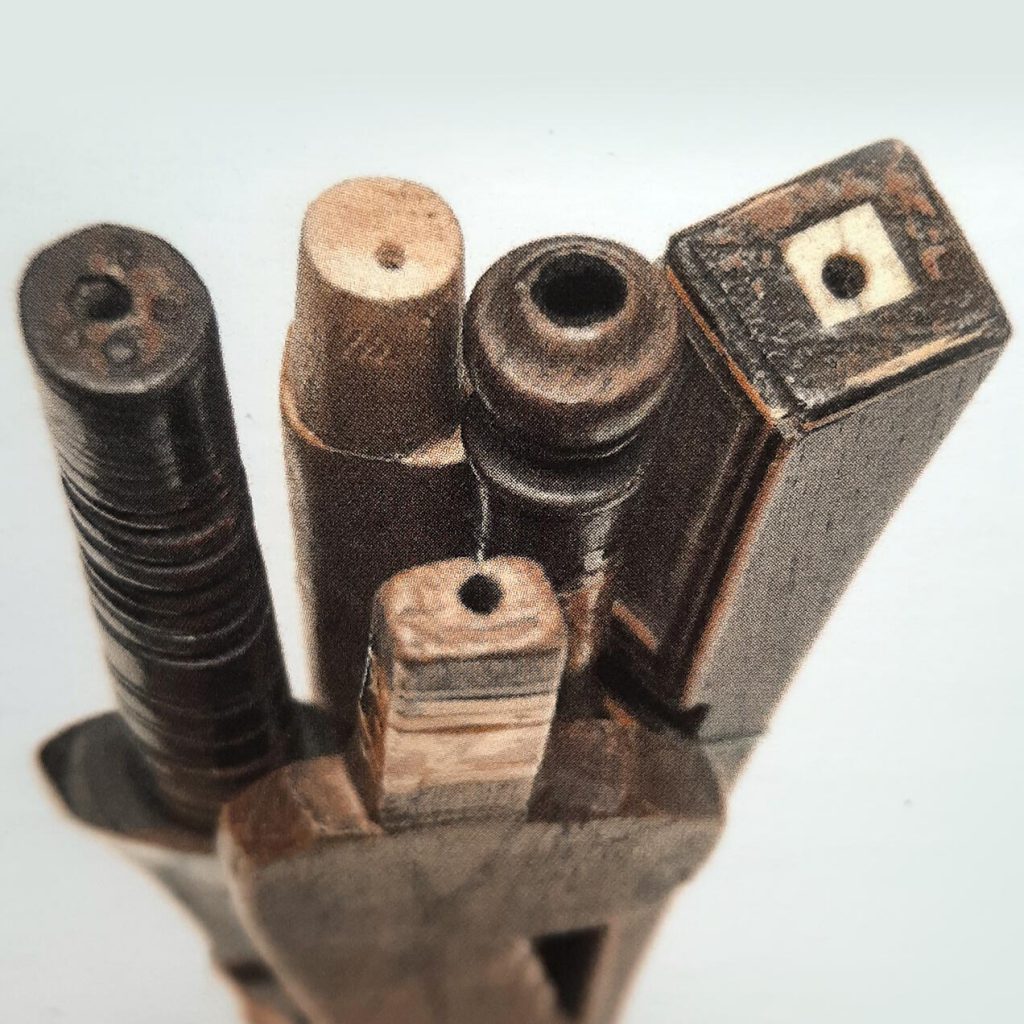
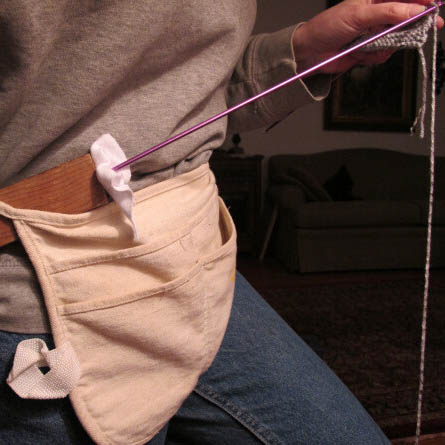
Types of Knitting Sheaths
The illustrations below show some of the many designs used, from very simple constructions up to very fine pieces of craft work. Spindle, Pierced, Ball and cage and Chain, Bundley Sticks, Chip-carved, Goose wing, Chisel shaped, Heart & novelty shaped, Ceramic, Blown Glass or metal, Forked and shafted sheaths. These are all types of handknitting sheaths.
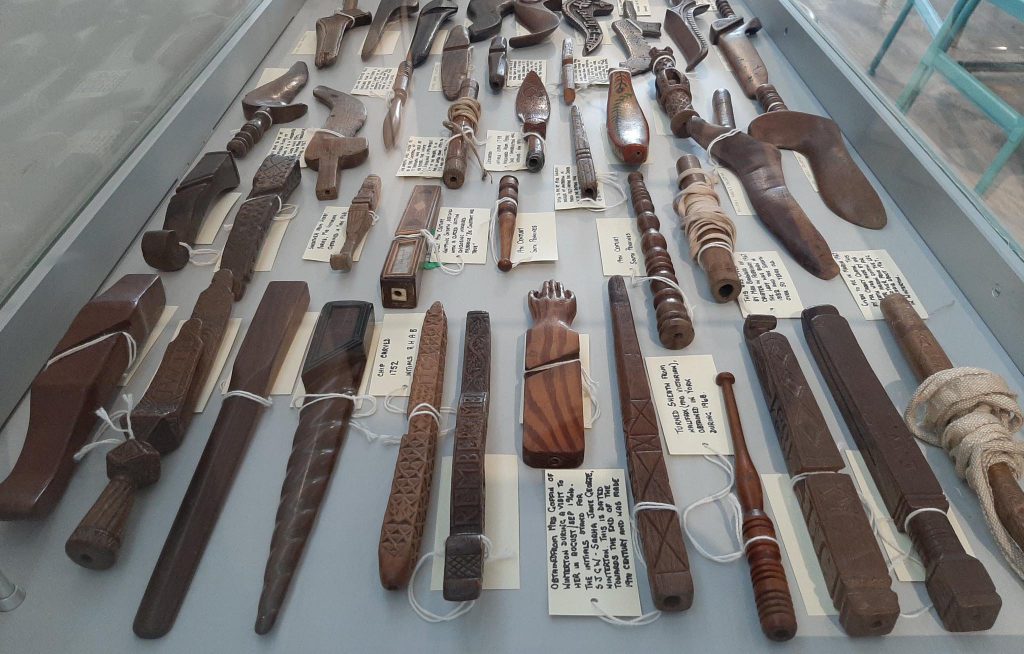
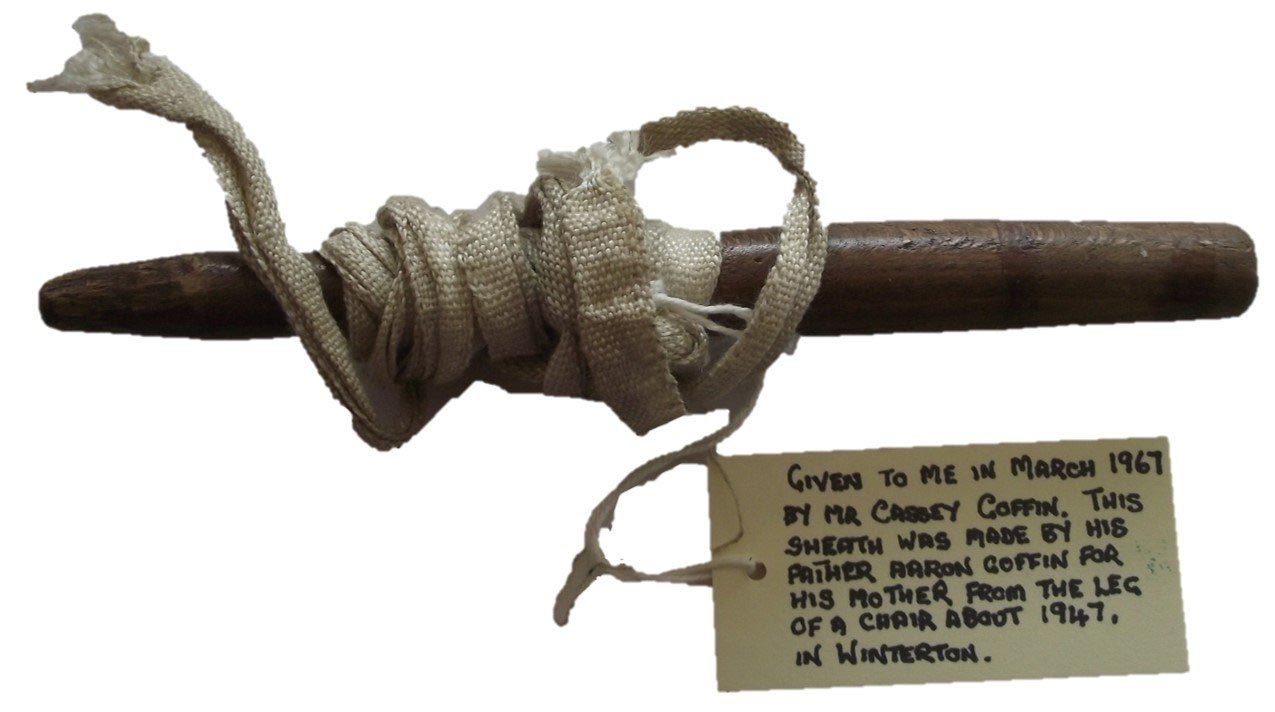
Spindle sheaths
Relatively simple in form with a turned appearance and date from the early 19th century. Later, more complex turned ‘spindle’ sheaths were made in the North of England, these were produced by the textile mills in quantity and on the same industrial machinery which made the bobbins and pirns used to hold the yarn for loom weaving.
Pierced sheaths
These have a cord threaded through to attach around the waist; these range from the simple to the very ornate. Ball and Cage and Chain sheaths are the most technically proficient and display the skill and ingenuity of the carver. Often a professional woodworker would even be able to fashion the wood into a links forming a chain.

